Add CLI validations and actions
Execute Node.js scripts from within your tests
In addition to writing custom validations and actions (which execute in the browser run-time environment), you can also create custom Node.js scripts that are executed in your CLI environment.
These scripts are initiated from inside a test just like a standard custom action. However, unlike custom validations and actions, CLI actions and validations open the gateway for some very advanced actions such as database validation and manipulation, image and PDF validations, and other validations. The real power of CLI steps comes from the ability to add any node package directly from npm (or any other source) and have those packages scoped to the CLI step during the execution of the test. We support all of the standard methods for defining package dependencies.
In addition to the Add CLI validation and Add CLI action steps, there is also the Validate download step, which is a specialized CLI step which allows you to validate that the download content of various file types are as expected. For more information, see Validate download.
Logs generated during the CLI action step will be displayed in the terminal, initiated in the execution, and preserved within the step in the 'Step Log' section at the bottom.
This is a pro feature
This feature is only open to projects on our professional plan. To learn more about our professional plan, click here.
Prerequisites
- In order to locally run tests which contain CLI validation or action steps, the following command needs to be executed: npm i -g @testim/testim-cli && testim connect (see below).
To locally run tests which contain CLI validation or action steps:
- Open the Command Prompt window for your operating system.
- In the command prompt, enter the following command: npm i -g @testim/testim-cli && testim connect

- Wait for the process to execute.
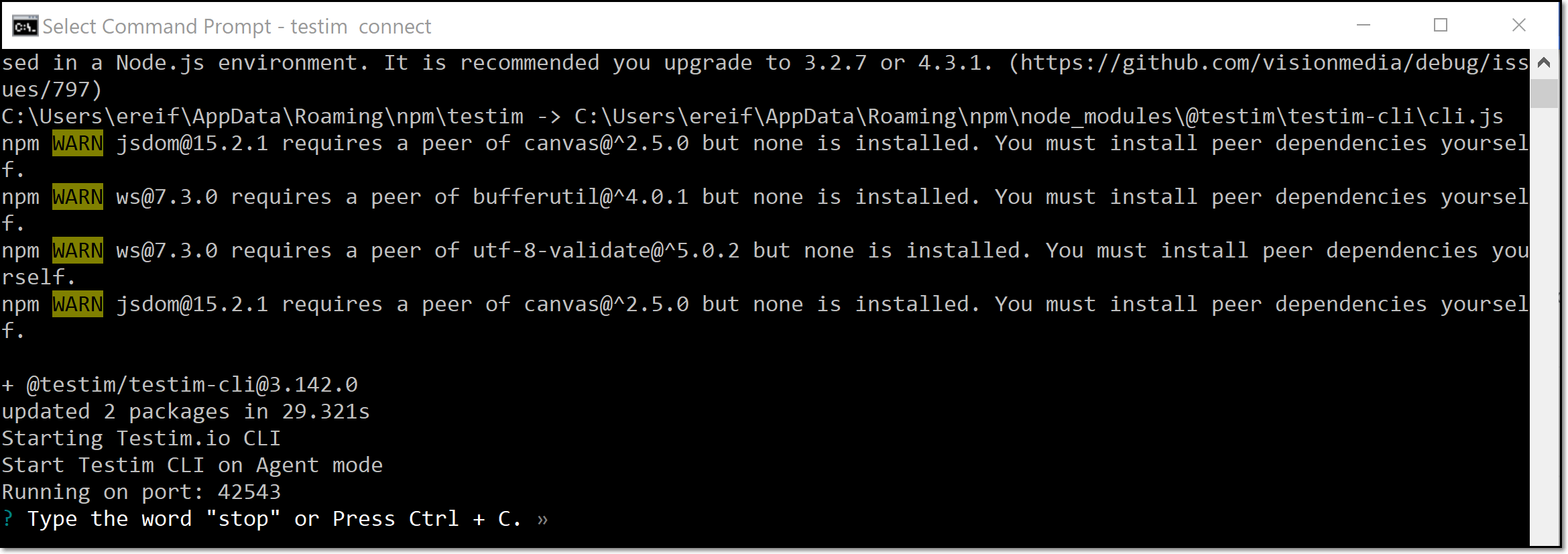
Adding a CLI step
The general procedure for adding a CLI step is the same regardless of whether you are adding an Add CLI action step or an Add CLI validation step.
To add a CLI step:
- Hover over the (arrow symbol) (or + symbol after the final step) where you want to add the CLI step.

- Click on the “M” (Testim predefined steps).
The Predefined steps menu opens.
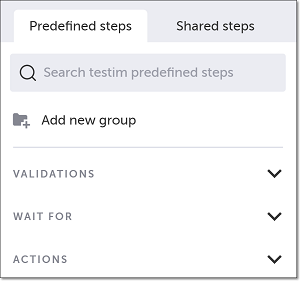
- Click on Validations (or Actions).
The Validations (or Actions) menu expands.
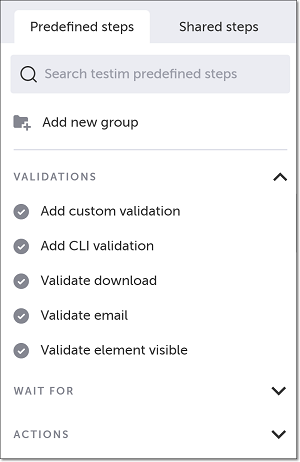
- Scroll down through the menu and select Add CLI validation (or Add CLI action).
Alternatively, you can use the search box at the top of the menu to search for Add CLI validation (or Add CLI action).
The Add Step window is shown.
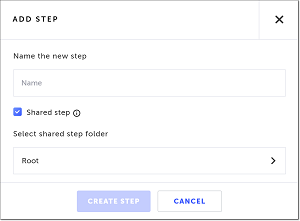
- In the Name the new step field, enter a name for this step.
- If this is a shared step to be made available to reuse in this or other tests, keep the box next to Shared step selected (default), and choose a folder from the Select shared step folder list where you want this step stored. Otherwise, deselect the checkbox.
For more information about shared steps, see Groups. - Click Create Step.
The function editor opens, and the Properties panel opens on the right-hand side.
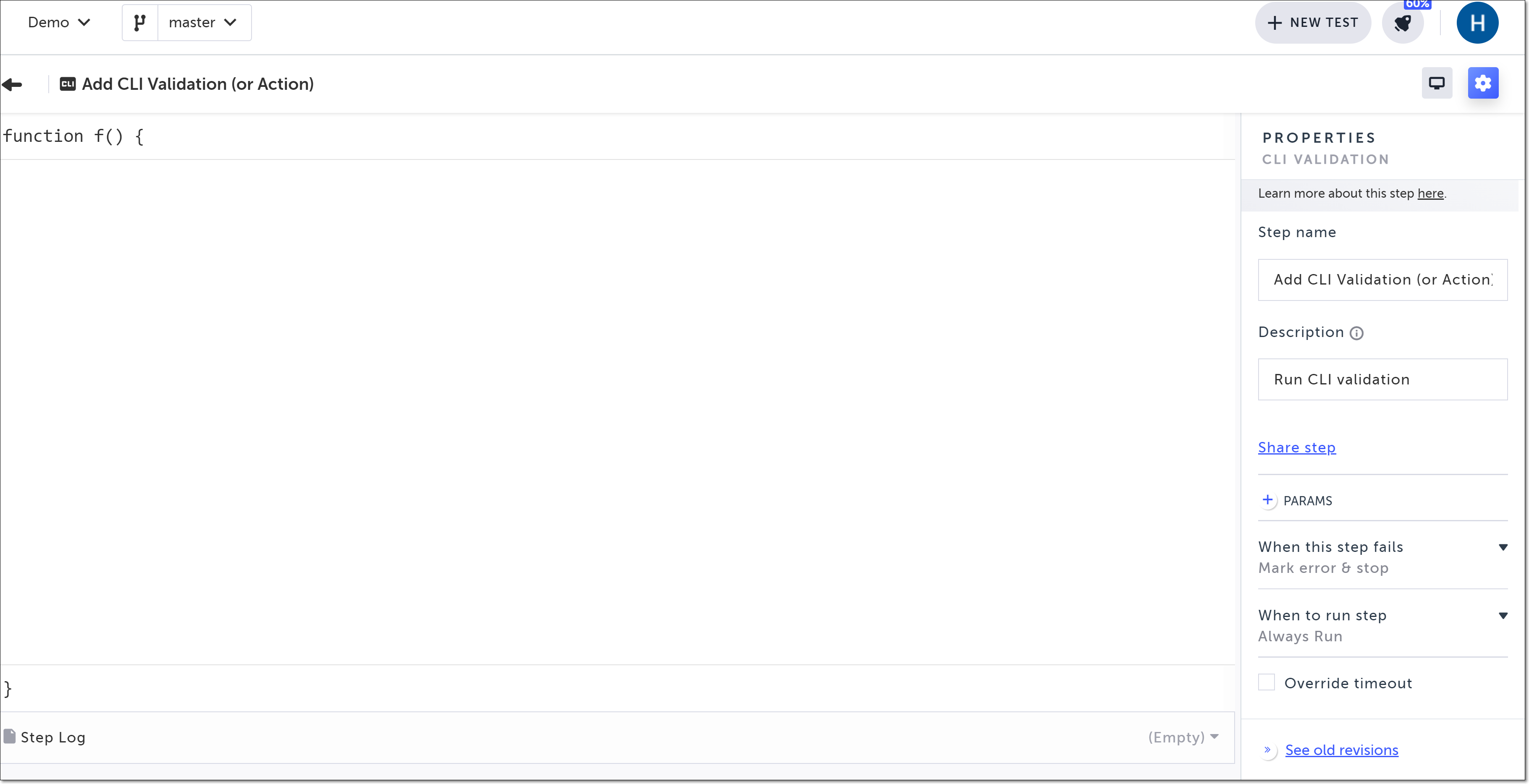
- In the Properties panel, in the Description field, optionally edit the description of this step. The default description is “Run CLI validation” (or “Run CLI action”).
- Define the parameters you will need for your step as follows:
a. In the Properties panel, click the + PARAMS button.
b. JS parameter: If you would like to add a JavaScript parameter, select JS from the dropdown list and type in the JavaScript parameter.
c. Package parameter: If you would like to add an NPM package variable, select Package from the dropdown list and type in the package variable.
In case your code uses an npm package, make sure NOT to
requireit, but rather replace therequireline with a PACKAGE parameter in the step properties.
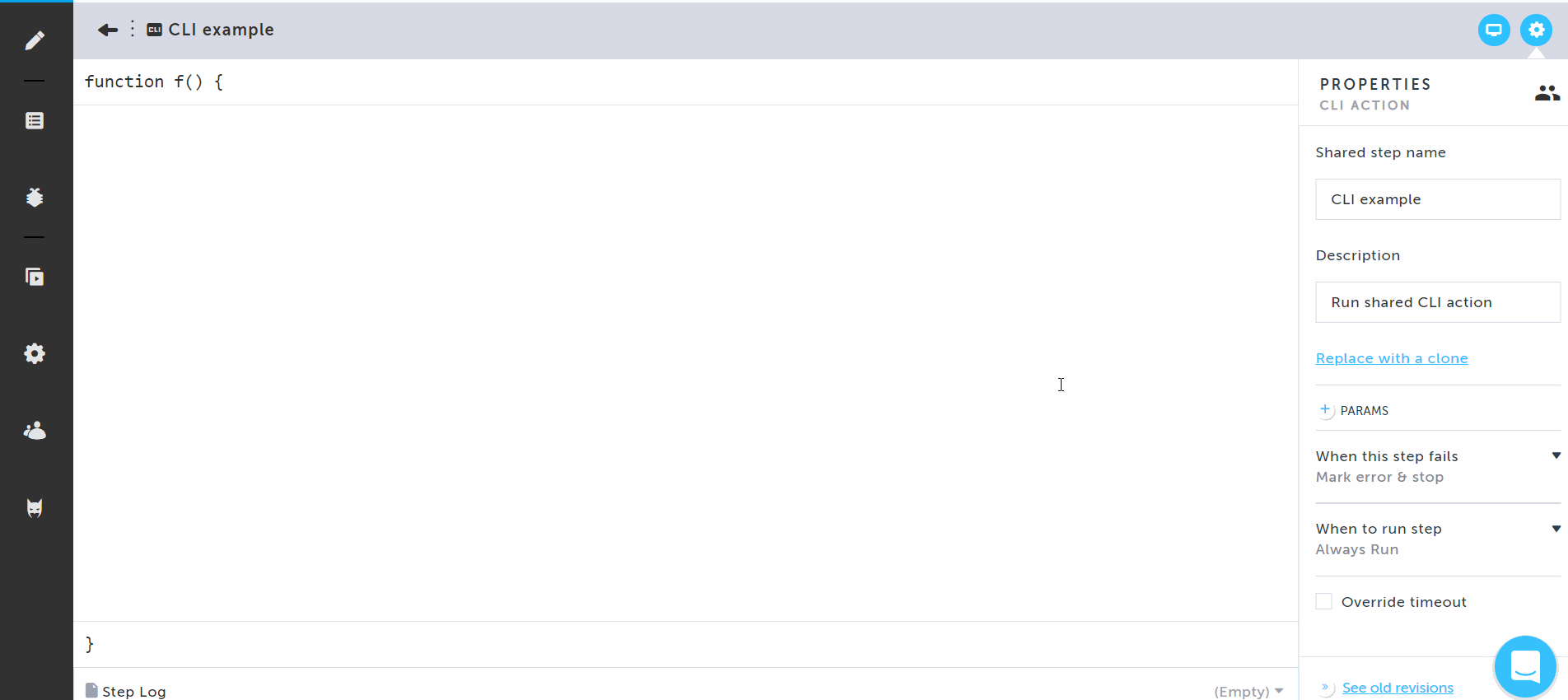
d. The selected element is automatically named “param” or “packageVariable” (depending on whether you chose a JS parameter or NPM package variable). To assign a relevant name to the parameter/variable, click on the edit icon and enter the desired name.
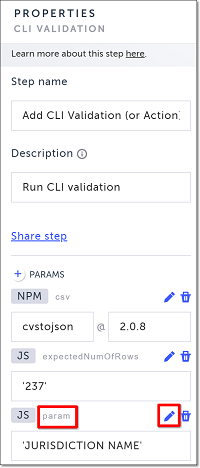
- In the function editor, enter your desired code. If you have defined parameters, you can refer to those parameters in your code.
To run async code in the CLI step, you have to return the promise you wish to resolve. Without returning it, the step will run synchronously and will resolve when the last line of code is executed, regardless of the expected results.
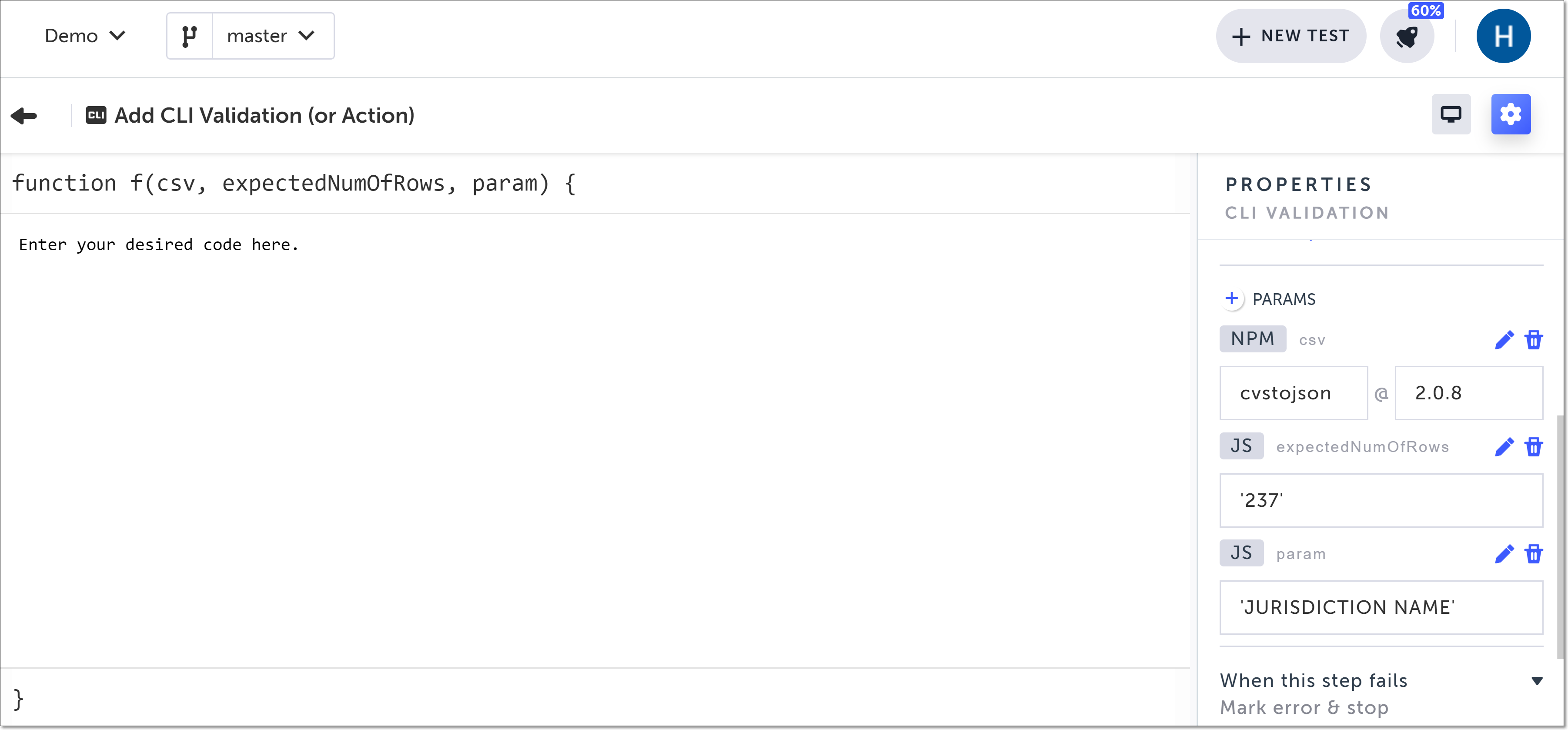
- If you would like to specify what happens if the step fails, click the When this step fails down arrow in the Properties panel, and choose your desired option. Options are: Mark error & stop, Mark error & continue, and Mark warning & continue.
- If you would like to control when this step runs (or doesn’t run), click the When to run step down arrow in the Properties panel, and choose your desired option. For more information, see Conditions.
- If you would like to override the default timeout setting (30000 ms), click on the Override timeout button in the Properties panel, and enter the desired timeout limit.
- Click the back arrow to return to the main Editor window.
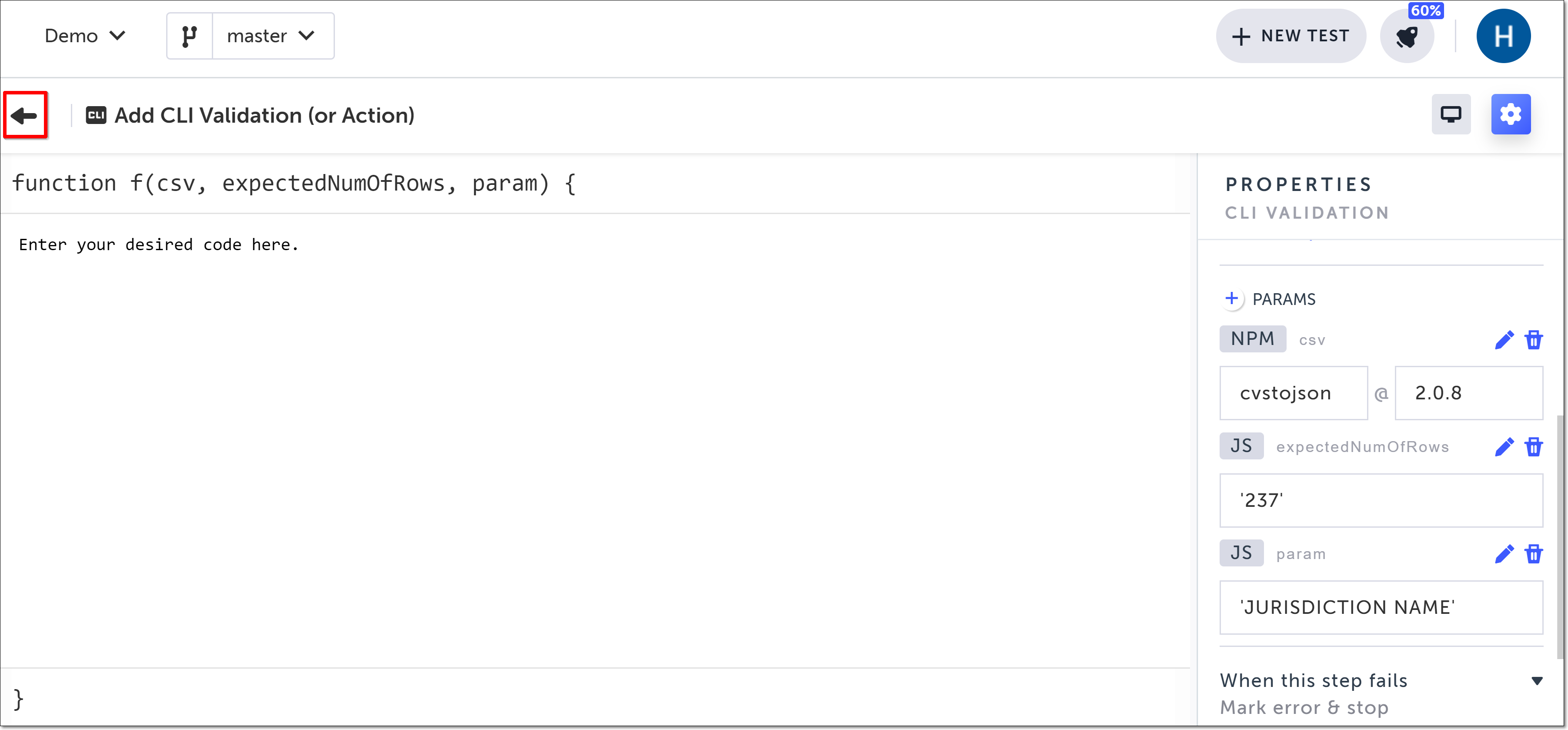
The step is created.

CLI step examples
Below are examples that use CLI steps.
Updated about 1 month ago
